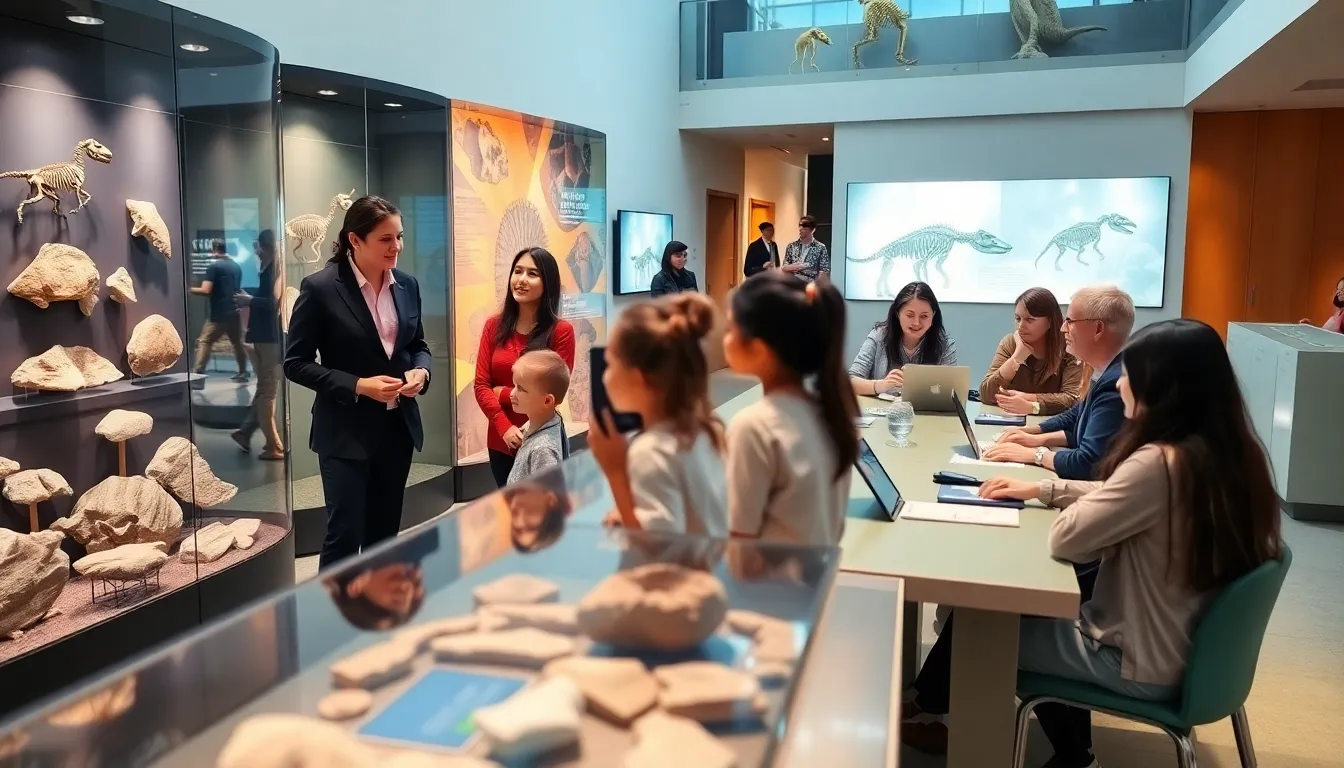Have you ever walked through a life science museum and thought, “Wow, this place is a treasure trove of knowledge”? Well, hold on to your goggles because we are diving deep into the vibrant world of evolution and how museums are not just dusty dinosaur dens, but lively hubs of education and engagement. If you think evolution is merely an academic concept, prepare to be amazed. Between engaging exhibits and interactive experiences, these museums are where curiosity comes alive, and knowledge is propelled into the future. Let’s unravel the fascinating role life science museums play in understanding evolution and how they are shaping the minds of tomorrow.
Table of Contents
ToggleThe Role Of Life Science Museums In Education

Life science museums serve as crucial educational platforms that go beyond the confines of traditional classrooms. They present learning experiences that are not just informative but also captivating. Schools often organize field trips, bringing students face-to-face with evolutionary principles displayed through interactive exhibits and fossil collections.
These institutions foster a sense of wonder and curiosity that textbooks can only hope to inspire. Plus to providing a tangible connection to scientific concepts, many museums offer specialized programs that target different age groups, ensuring that everyone, from preschoolers to adults, can understand and appreciate the intricacies of life science.
Also, life science museums often collaborate with educational institutions, creating workshops, lectures, and interactive sessions that bring experts into the conversation. This interdisciplinary approach enriches the visitor experience, weaving together biology, anthropology, and history, allowing for a holistic understanding of evolution.
Understanding Evolution Through Museum Exhibits
Museum exhibits play a pivotal role in demystifying the complex subject of evolution. Life science museums bring this concept to life through well-designed displays that illustrate the gradual changes in species over time. For instance, think of a giant mural featuring the Tree of Life, it doesn’t just showcase species: it tells stories about adaptation and survival in different environments.
Exhibits are often designed to be informative yet approachable. They use various methods like immersive dioramas, interactive timelines, and engaging visuals that capture the essence of evolutionary science. Imagine seeing life-sized models of creatures that roamed the Earth millions of years ago, there’s nothing quite like standing in the shadow of a T-Rex.
Besides, many museums emphasize the importance of genetic research and fossil finds in understanding evolutionary pathways. By integrating real-world examples, they help visitors grasp how scientific processes work, illustrating the beauty of natural selection and genetic variation.
Interactive Experiences That Engage Visitors
One of the most compelling aspects of life science museums is their commitment to fostering interaction. No longer are visitors passive observers: instead, they are encouraged to jump into the exhibits. By offering hands-on experiences, these museums keep the excitement of discovery alive.
Take, for example, touch-screen displays that allow visitors to explore genetic sequences, or virtual reality stations that transport them to different ecosystems around the globe. These interactive elements create a richer experience, enabling guests to explore topics at their own pace.
Also, many museums host workshops where attendees can engage in activities like fossil digs or science experiments, turning the learning process into a fun adventure. This experiential learning approach not only deepens understanding but also fosters a sense of community among participants, connecting them through shared curiosity and exploration.
The Importance Of Conservation And Research
Beyond education, life science museums play a vital role in conservation and research. They serve as custodians of invaluable collections of specimens that contribute to ongoing scientific studies. Through research, museum scientists can uncover insights into biodiversity, climate change, and the evolutionary history of species.
Many of these institutions also actively participate in conservation initiatives. Whether it involves preserving endangered species or habitat restoration, museums work tirelessly to protect the planet’s biodiversity. Educational programs often emphasize the significance of conservation, inspiring visitors to become stewards of the environment.
Also, partnerships with universities and research institutions enable museums to contribute to real-world scientific advancements. By collaborating on research projects, museums can further enhance their exhibits with the latest scientific findings, ensuring that visitors receive up-to-date information.
RedWebzine: Spotlight On Innovative Exhibits
Turning our attention to RedWebzine, one must marvel at how this platform spotlights innovative exhibits in life science museums. By showcasing cutting-edge displays, RedWebzine creates a conversation around the importance of engaging, modern museum experiences.
Through reviews and articles, readers can discover which exhibits are pushing boundaries in scientific storytelling. For example, some museums have begun utilizing augmented reality to animate extinct species, allowing visitors to see how these creatures might have interacted in their environments. This type of innovation keeps museum experiences fresh and relevant, ensuring that visitors leave with a newfound appreciation for evolution.
Also, RedWebzine often covers exhibitions that tackle contemporary issues like climate change, reinforcing how museums adapt to highlight the intersection of science and current events. By promoting these exhibits, they help cultivate a community of engaged learners who actively pursue a deeper understanding of life sciences.
Future Trends In Evolution Exhibits At Museums
Looking ahead, the future of life science museums appears bright, especially about evolution exhibits. As technology continues to advance, museums are expected to leverage tools like AI and virtual reality more extensively. Imagine exploring biodiversity hotspots or ancient ecosystems through immersive simulations, these experiences are just around the corner.
Another notable trend is the shift towards inclusivity in exhibits. Museums aim to represent a wider range of perspectives and narratives, ensuring that the stories of evolution include voices from various cultures and backgrounds. By doing so, they reflect the diverse fabric of society and foster a more comprehensive understanding of science.
Also, with the rise of online education, museums are likely to blend physical and virtual experiences, allowing visitors to engage with exhibits remotely. This hybrid model can widen access, breaking down barriers for those unable to visit in person.



